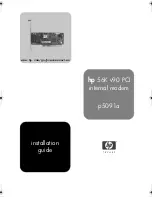
Serial interface specification: Turning the radio ON
RIM 801D OEM Radio Modem – Integrator’s Guide
23
Turning the radio ON
To turn on the RIM 801D, the software should first check the ONI pin. If
ONI is high, but TURNON is being held low, then the radio is currently
performing shutdown operations and should not be disturbed. Wait for ONI
to go low before continuing.
If ONI is low, this indicates the radio is in the off state. Set the TURNON
line high to activate the unit. The ONI pin will respond by going high from
100 - 500 ms later. Once the ONI pin is high, other handshaking and
communication signals can begin.
If the radio does not respond to the TURNON signal within 1 second, the
TURNON line should be de-asserted. Another TURNON cycle should then
be attempted. If the radio still fails to respond, the radio may require service,
or the battery may be too low for proper operation.
Turning the radio OFF
To turn the RIM 801D off, the software should de-assert the TURNON line
by setting it low. The radio will then begin shutdown operations. All inputs
to the radio should also be set low. The ONI pin will remain active until all
shutdown operations are complete. Attempting to communicate with the
Radio during shutdown may extend the time taken to perform shutdown
operations.
Shutdown will normally require several seconds to complete. Upon
completion the ONI signal will be de-asserted (low). All inputs to the radio
must now be set low, if they are not already low. This ensures that power
consumption will be reduced to the lowest possible levels. Note that if any
line is left in the high state, as much as 5 mA may flow into the radio
modem.
Flow control inputs that are not used may be tied to ground. This ensures
that they will be asserted during radio operation.
SDUs (Service Data Units) which have been received over the DataTAC
network to radio link, but which have not been transferred across the radio
















































